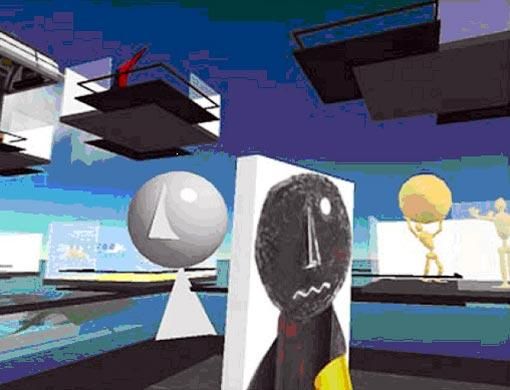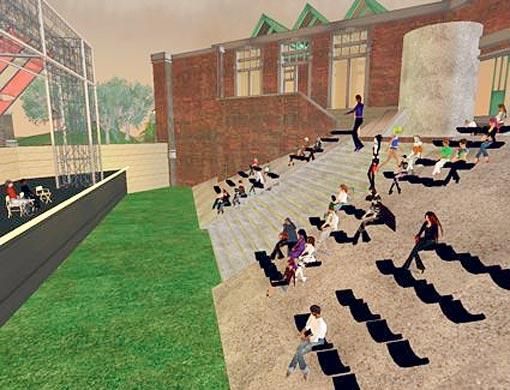Shobha Menon, a Philadelphia-based artist, plans to build an art gallery on Second Life, one of the internet's more successful virtual worlds.
Shobha, as she likes to be called, thinks the virtual community of about 13 million residents of Second Life will help her reach more connoisseurs of art.
The India-born artist is among several thousand others who despite their success in real life have been attracted to Second Life (www.secondlife.com), a virtual world of idyllic wooded islands and breathtaking architectural marvels.
Statistics available online show there were some 13,348 islands created by users of Second Life as of March 23.
In the virtual world - some call it metaverse as opposed to universe - the residents, or Second Lifers, exist as avatars, or images.
The avatar becomes the cyber farer's identity just like the nickname on internet chats or social networking sites like Orkut, Myspace or Facebook. But the avatar is different from a "nick" in that the former is a three-dimensional image that the user controls.
Avatars interact with other avatars that make the cyber community much the same way as humans do in real life.
Through an avatar, one can watch his/her neighbours move about on a three-dimensional virtual space and chat by text or voice with him/her.
A user controls his/her avatar through arrow keys on the key board or through the mouse.
The avatar can be made to walk, run, sit, stand or even fly.
Second Life, populated by some handsome and some weird-looking avatars, was created by US-based Linden Lab owned by Philip Rosedale.
After a slow beginning, Second Life gathered momentum from 2006. In the last 60-day period itself, it has signed up almost a million people. This virtual world has now set a sizzling pace of growth.
Commercial transactions on Second Life use Linden Dollars as currency. The current exchange rate for it is about 270 Linden Dollars to $1 (Dh3.67).
Like Shobha, hundreds of artists are migrating to Second Life. The flexibility that the cyber world offers in presenting their works is an added attraction to them.
According to The New York Times, there are more than 1,000 virtual art galleries on Second Life.
Small margins, big volume
Cao Fei, a Chinese artist, in December last year sold a creation of hers on Second Life for $100,000 (Dh367,000). Though Cao, who goes by the name China Tracy, paints, sculpts and shoots quaint short videos, her windfall was from a virtual piece of real estate that she had created on Second Life.
Second Life had its first millionaire in late 2006 when Second Lifer Anshe Chung's net worth in the virtual world crossed $1 million.
Anshe Chung's creator, Ailin Graef, is a Chinese teacher living in Germany, and has been dealing in virtual "real estate".
Rosedale calls Graef, or more precisely Anshe Chung, "the Rockfeller of Second Life".
"I am like Wal-Mart," says Graef. "The margins are small, but the volume isn't."
It's not just individuals who are making Second Life their world for doing real business. Once used only by internet buffs and cyber gamers, virtual worlds are increasingly becoming the medium for doing serious businesses.
Second Life already boasts the serious presence of some big companies like IBM, Microsoft, Intel, Adidas and Toyota.
Toyota even allows residents to drive around the landscape its Toyota Scion car, which allows prospective users to get a feel of its interior and handling comfort.
Philippines President Gloria Arroyo last year became the first head of state to premiere in the virtual world in an attempt to get word out to youngsters about her reform programmes.
Universities are finding the medium useful to interact with students and conduct distance-independent seminars and discussions.
The News Media Consortium's NMC Observer writes how useful it was to stream the proceedings of an integration programme of Wayne State University in February on Second Life.
The report says some 40 avatars flocked to the NMC Amphitheatre, a virtual space created specifically to hold education events. NMC claims Second Life is emerging as a great place for education and for non-profit organisations.
Some of the big names among universities like Harvard and Stanford have already opened their offices on Second Life.
Experts say virtual worlds like Second Life are here to stay and future business models would have to factor them in for an extra edge. Thousands like Shobha are taking the Second Life closer to that prophecy every week.














